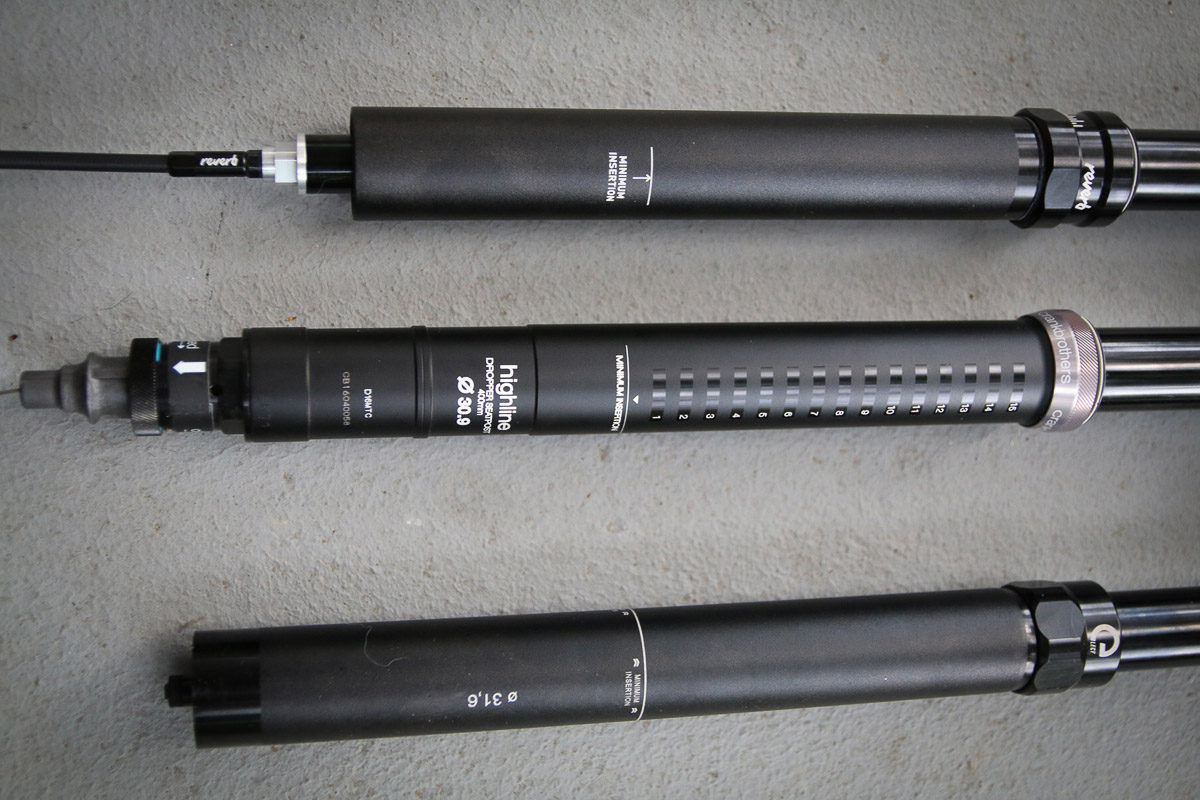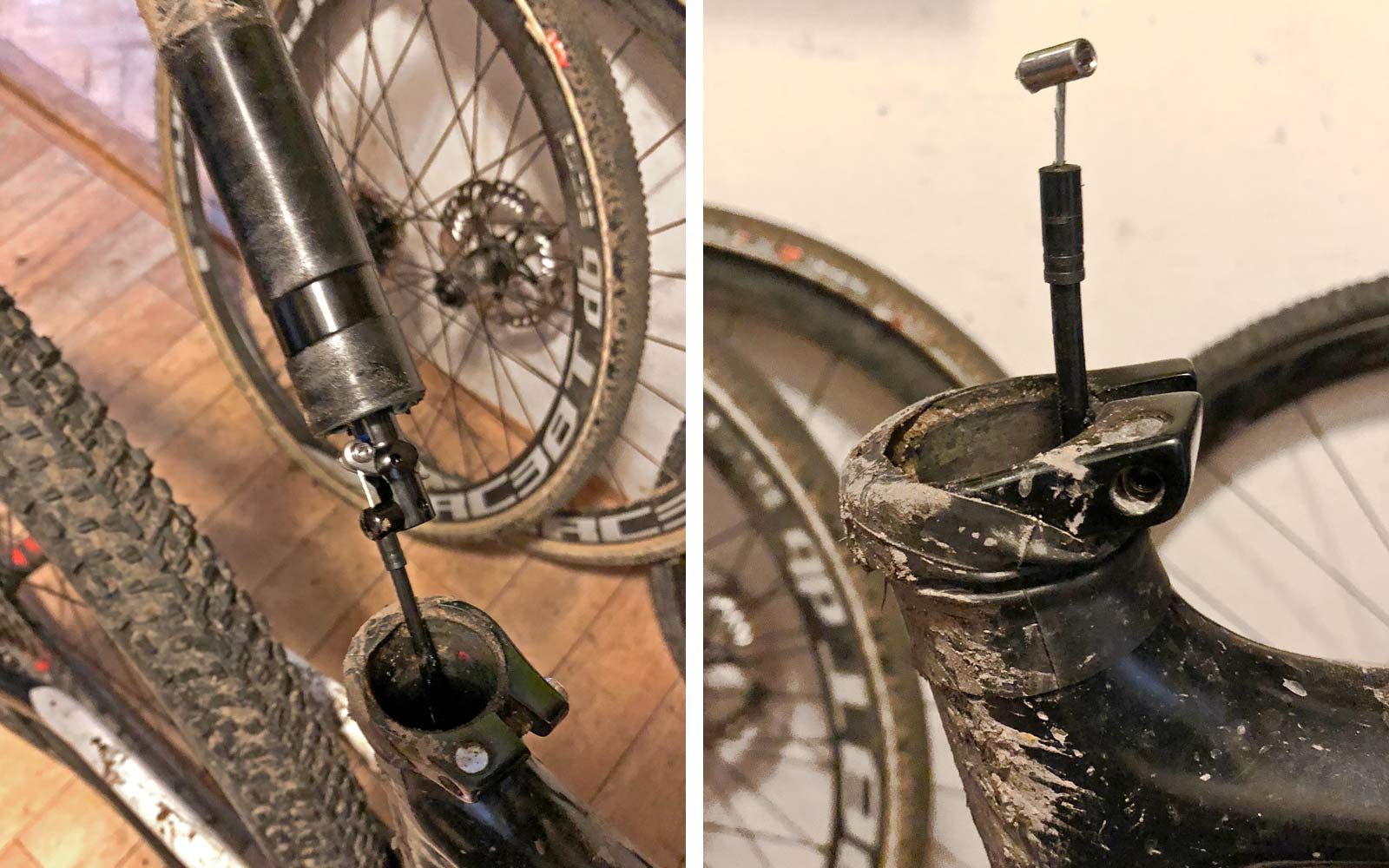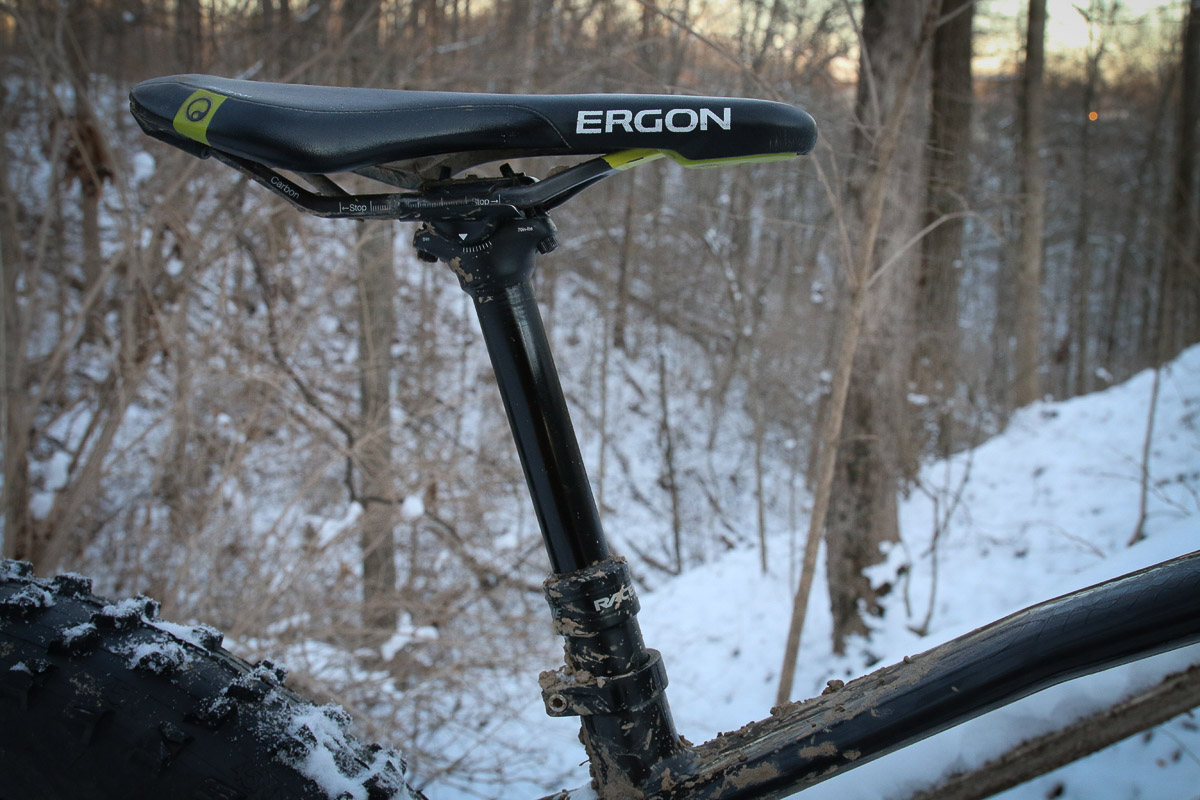In the last two weeks our Suspension Tech series has gone deep into how to pick the best travel dropper for your riding and how to actually be sure the dropper you want will fit your bike. So now we can assume everyone has a dropper in their bike, right?. Then what kind of maintenance are you going to need to keep it running like new?
What you need to do to keep a dropper sliding smoothly
Again our insider engineers at BikeYoke, KS & 9point8 gave us the full lowdown on the maintenance that a dropper post requires. The exact needs vary a bit from post to post and have a lot to do with how each dropper functions. Most (but not all) use a precise Internal Floating Piston (IFP) charged with oil & air to drop your post and get it back up again. All have seals & bushings that need to be kept clean to slide smoothly. Most (but again, not all) also use some form of cable actuated remote.
In all cases, now we are talking about active suspension components that need to move up and down consistently. Dropper seatposts sit in an exposed position right next to the spinning rear wheel where they are subjected to all the mud, dust, salt, sand & debris your tire can flick up. Cleanliness and proper lubrication are going to be the buzz words here.
What type of regular maintenance is needed, and at what intervals?
 For the most part typical maintenance is going to mean cleaning, regular inspection, and lubrication of the upper stanchion and main seal/wiper. You should treat your dropper like a shock body or fork sliders.
For the most part typical maintenance is going to mean cleaning, regular inspection, and lubrication of the upper stanchion and main seal/wiper. You should treat your dropper like a shock body or fork sliders.
That means wipe your post clean and the wiper dry after every ride. A little suspension grease (ie. SRAM Butter, Slick Honey, Wet Seal, Silicon Shine, etc.) occassionally wiped on the seal is always good. But remember, no degreasers, penetrating oils, or really any aggressive cleaners (no WD-40, for example). And you essentially want to wipe off all excess, so the grease doesn’t attract/collect dirt.

Beyond that for example, 9point8 says to open up and regrease their main seals once a year, KS every six months. That falls in line with most manufacturers, and typically is something that doesn’t require fully disassembling the dropper, but does usually mean pulling it out of your bike. And then following the manufacturer’s instructions to clean & pop out the seals, put new grease on it, and snap it back into place – sometimes replacing the seal itself with easily available parts. Now for some droppers this might be a 10 or 15 minute job, others you may be looking at an hour or more, especially if you aren’t used to doing it. This is time to grab a frosty beverage, head to your post manufacturer’s youtube channel, and watch the full service video before you start taking things apart.
Other than that, droppers are mostly designed to function with their factory internal grease for their full functional life – often quoted as number of cycles or up to even 10 years of regular use. Those internal hydraulics of droppers usually don’t require any maintenance. And even if they do ultimately fail (a real dropper problem still, unfortunately) it probably is a case of replacing internals rather than rebuilding them.
BikeYoke reminds us that one thing other suspension components don’t have to deal with as much is water & contamination inside the bike frame. Most cyclists ride in wet conditions, and hopefully everyone washes their bikes occasionally (hopefully not with a pressure washer, though.) That often means some water gets trapped inside the frame, and we often forget about it. While that is a good way to kill a bottom bracket, dropper posts also suffer. Moisture & even humidity inside the seattube can lead to corrosion of the post. Most also have internals open to varying degrees from the bottom to allow for pressure relief, making them more vulnerable.
Again many stealth routed posts have linkage-operated remotes, and performance will drop over time with corrosion & contamination. Don’t forget that cable. New cables and housing can often be a cheap and easy remedy if your dropper actuation starts acting up or feeling stiff.
What type of riding warrants additional or more frequent maintenance?
As anyone with a dropper knows, they are in the direct line of fire for rear wheel spray. That means every dropper maker knows that too. And posts generally are well sealed against water, mud, and dirt infiltration.
Interestingly enough, almost every engineer we talked to said dry & dusty conditions are just as troublesome as heavy mud (if not more so.) That might have something to do with users not cleaning their posts as often in dry riding. Or maybe just that fine dust likes to try to work its way past the seals.
This is where you just need to keep an eye on your dropper and try to monitor its consistent performance. Much like with a fork or even your drivetrain, use your best judgement. And if you think your riding conditions are especially harsh, you should probably service/grease/replace your seals more often.
Should you protect droppers with fenders or boots to prolong life?
We see many bike makers trying to protect the rear shock from wheel spray with integrated frame fenders, and more riders using clip-on saddle-mounted fenders to keep their butts clean. But neither of those do anything to protect a dropper post. So should we find a better solution?
It seems dropper makers aren’t really too worried about it. Sure keeping foreign material off the stanchion is a good practice, but regularly cleaning the slider is just as, if not more important. But when asked about things like putting boots on the post itself, KS went further saying it is better to avoid something that can trap water & dirt on the post. And riders who can see the condition of the post, are more likely to keep it properly clean and lubricated.
Does how I store my bike affect dropper life or maintenance needs?
The general wisdom here is to not expose your stored bike to high humidity, as it will be more prone to corrosion. Inside the dropper that means things like corroded guide pins, guides, and sticky travel. Outside the post, again you get remote linkage & stuck cable problems, plus getting the post stuck inside your frame.
If you are going to store your bike for months at a time (say the end of your riding season), this is the best time for your annual service. Then you know the bike is put away with the seal cleaned, dried, and properly lubed. Storing with the dropper extended is also probably best, as that is when internal pressures are their lowest.
Some IFP systems are still susceptible to the internal formation of air bubbles (cavitation) if you store your bike upside down, like being hung from the wheels. (BikeYoke, KS & 9point8 each said this isn’t an issue for their designs.) Also if you are going to store a bike by hanging it from the saddle, you need to extend your post before doing so. Don’t pull on a hydraulic post while the saddle is dropped, as you risk forcing air into the piston, which can turn your post into an unusable pogo stick. Both valid concerns to keep in mind.
Now that we are all riding around slinging mud at the back of our droppers and popping the saddle up and down all the time, these tips should be enough to keep those posts telescoping smoothly. Next up is going to be how we control those dropper seatposts. We see a constant influx of ways to set up dropper remotes. Next week we’ll help you figure out which is best for you, and if it is time for a update to improve the overall dropper experience.
The fun never ends. Stay tuned for a new post each week that explores one small suspension tech, tuning or product topic. Check out past posts here. Got a question you want answered? Email us. Want your brand or product featured? We can do that too, and let our readers know you support explaining the tech we all ride.






